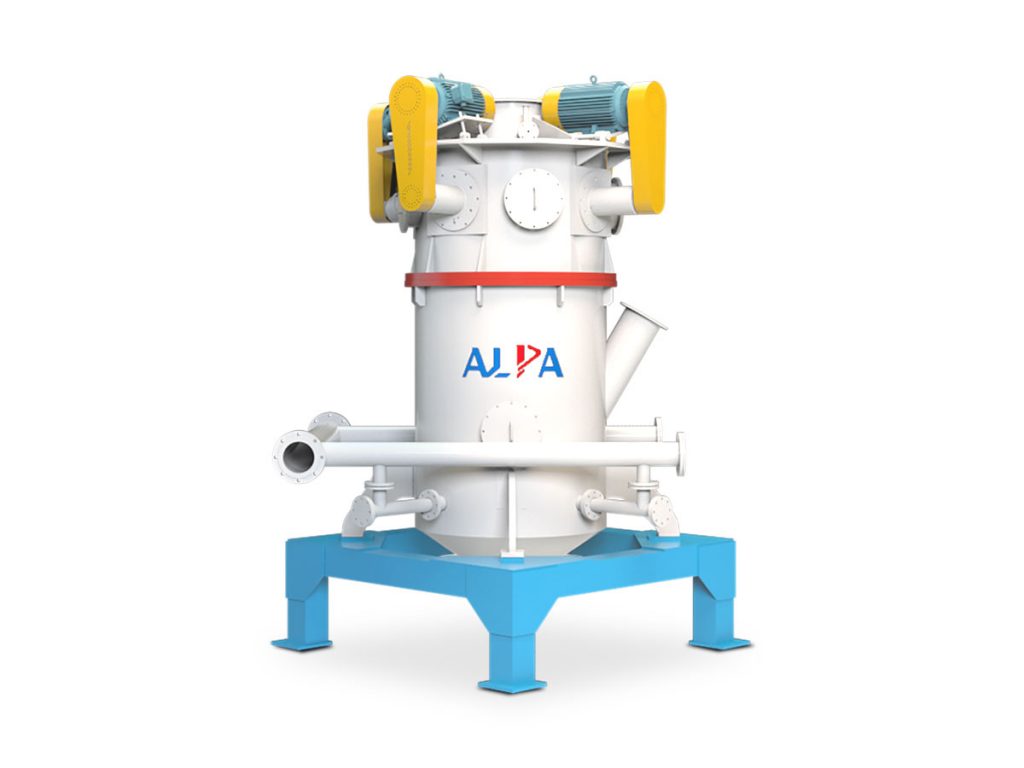Application of jet pulverization equipment in the production of titanium dioxide

1. Principle of jet milling
Jet milling equipment includes jet mill, jet mill or fluid energy mill, which uses the energy of high-speed airflow or superheated steam to make particles impact, collide, and rub against each other to achieve ultrafine pulverization or depolymerization. The general principle of jet milling: Dry and oil-free compressed air or superheated steam is accelerated into a supersonic airflow through the Laval nozzle, and the high-speed jet ejected drives the material to move at a high speed, causing the particles to collide and rub against each other to be crushed. The crushed materials arrive at the classification area with the airflow, and the materials that meet the fineness requirements are finally collected by the classifier, and the materials that do not meet the requirements are returned to the crushing chamber to continue crushing.
2. Classification of jet milling equipment
There are mainly several types of jet mills used in my country’s industry: flat jet mill, fluidized bed jet jet mill, circulating tube jet mill, counter jet jet mill, and target jet mill. Among these types of jet mills, flat jet mills, fluidized bed jet mills, and circulating tube jet mills are widely used.
2.1 Counter jet jet mill
After the material enters the crushing chamber through the screw feeder, the impact energy of the high-speed airflow is sprayed out by several relatively set nozzles, and the rapid expansion of the airflow forms the collision and friction generated by the suspension and boiling of the fluidized bed to crush the material. Coarse and fine mixed powder is driven by the negative pressure airflow through the turbine classification device installed on the top. The fine powder is forced to pass through the classification device and is collected by the cyclone collector and bag filter. The coarse powder is thrown away by gravity and the centrifugal force generated by the high-speed rotating classification device. It goes to the four walls and settles back to the crushing chamber to continue crushing.
2.2 Flat jet mill
The high-pressure airflow as the crushing kinetic energy enters the pressure-stabilized air storage bag on the periphery of the crushing chamber as an air distribution station. The airflow is accelerated into a supersonic airflow through the Laval nozzle and then enters the crushing chamber, and the material is accelerated into the crushing chamber through the Venturi nozzle. Perform simultaneous crushing. Since the Laval nozzle and the crushing chamber are installed at an acute angle, the high-speed jet stream drives the material to circulate in the crushing chamber, and the particles collide, collide, and rub against each other as well as with the wall of the fixed target plate to be crushed. Driven by the centripetal airflow, the fine particles are introduced into the central outlet pipe of the pulverizer and enter the cyclone separator for collection, while the coarse powder is thrown to the surrounding wall of the pulverization chamber under the action of centrifugal force for circular motion and continues pulverization.
2.3 Circulating tube jet mill
The raw material is fed into the crushing chamber through the Venturi nozzle, and the high-pressure air is sprayed into the runway-shaped circulating tubular crushing chamber with unequal diameter and variable curvature through a group of nozzles, accelerating the particles to collide, collide, rub and crush each other. At the same time, the swirling flow also drives the crushed particles upwards into the classification area along the pipeline, and the dense material flow is shunted under the action of the centrifugal force field in the classification area, and the fine particles are discharged after being classified by the louver type inertial classifier in the inner layer. Coarse particles return along the downpipe in the outer layer and continue to be pulverized in a circular manner.
2.4 Fluidized bed jet mill
Jet mill (fluidized bed jet mill) is the compressed air that is accelerated by the Laval nozzle into a supersonic airflow and then injected into the crushing area to make the material fluidized (the airflow expands to form a fluidized bed that suspends and boils and collides with each other). Therefore every particle has the same motion state. In the pulverization zone, the accelerated particles collide with each other and pulverize at the junction of each nozzle. The crushed material is conveyed to the classification area by the updraft, and the fine powder meeting the particle size requirement is screened out by the classifying wheels arranged horizontally, and the coarse powder not meeting the particle size requirement is returned to the crushing area for further crushing. Qualified fine powder enters the high-efficiency cyclone separator with the airflow to be collected, and the dusty gas is filtered and purified by the dust collector and then discharged into the atmosphere.
